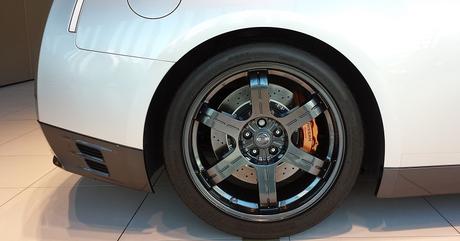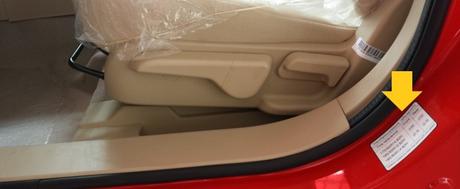
Tire Wear Patterns and What they Mean
Wearing on various spots of tire
Wheels are out of balance
Before explaining this, we really need to first take a look at the notion of "wheel balance/imbalance". A wheel consists of a rim and tire. When rims and tires are manufactured, they're almost always somewhat flawed. For example, in the case of a tire, one portion of a tire's tread may be slightly thicker than a similar-sized portion of tread elsewhere on the tire. This means the tire isn't balanced in terms of weight distribution. To balance the tire, a mechanic will strategically position/fasten lead weights to the edge of the rim, thus compensating for the manufacturing error. Now, back to the problem at hand. If a wheel isn't balanced, it won't rotate evenly as the vehicle is being driven and, thus, this will cause the tire to wear mainly in a spotted fashion.What to do?
If the tire in question is severely worn, have it replaced. Any mechanic will immediately balance the wheel after replacing the tire. However, if the tire in question isn't severely worn, simply have the wheel balanced so as to prevent any further abnormal wear. There are two methods of balancing - static, with the wheel of the vehicle, and dynamic, with the wheel on. The dynamic method is best since it takes into account the brake disk (or drum) and its influence on a wheel's balance.
Wearing mainly in the middle of the tire
Tire over-inflated
When a tire is overinflated it bulges, thus causing the tire to ride mainly in the middle of the tread. Consequently, the tire tends to wear mainly in the middle.What to do?
Let some air out of whichever tires are overinflated. Refer to this vehicle's owner's manual for the correct air pressure.
Tire Pressure Guide

Wear on both edges of the tire, not in the middle
Tires is underinflated
Tires are constructed in such a way that, when underinflated, it will cause the part of the tread which is in contact with the ground to sort of "arc" or curve downward. As a result, there is more weight on the tire's edges than in the middle. Consequently, the tire tends to wear mainly on the edges.
What to do?
Add some air to whichever tires are underinflated. Refer to this vehicle's owner's manual for the correct air pressure.
Wear mainly on the outside edge of the tire
Wheel alignment problem positive camber
The idea of "wheel alignment" essentially has to do with how straight the wheels are relative to the vehicle's frame. Mechanics use the term "camber" when they are talking about the tilt of a wheel. Specifically, a wheel has either 1) positive camber, 2) negative camber, or 3) no camber. If a wheel has a "positive camber", it's tilted outward or, away from the vehicle's frame. If a wheel has a "negative camber", it's tilted inward or, towards the vehicle's frame. If a wheel has no camber, it's not tilted - this is what you want. As you indicated in the problem you chose, one (or more) of the tires is wearing mainly on its outside edge. This means the wheel is tilted outward or, has a "positive camber". An outward tilt will, of course, cause the tire to wear on its outside edge.
What to do?
You'll need to have an alignment job done on this vehicle. It's a good idea to have this done soon because the longer you wait, the worse the tire(s) will get. Some mechanics may tell you they can't do an alignment properly without first replacing one or more front end parts. If this is what a mechanic tells you, get a second opinion before proceeding with any such repairs.
Wearing mainly on the inside edge of the tire
Wheel alignment problem negative camber
The idea of "wheel alignment" essentially has to do with how straight the wheels are relative to the vehicle's frame. Mechanics use the term "camber" when they are talking about the tilt of a wheel. Specifically, a wheel has either 1) positive camber, 2) negative camber, or 3) no camber. If a wheel has a "positive camber", it's tilted outward or, away from the vehicle's frame. If a wheel has a "negative camber", it's tilted inward or, towards the vehicle's frame. If a wheel has no camber, it's not tilted - this is what you want. As you indicated in the problem you chose, one (or more) of the tires is wearing mainly on its inside edge. This means the wheel is tilted inward or, has a "negative camber". An inward tilt will, of course, cause the tire to wear on its inside edge.
What to do?
You'll need to have an alignment job done on this vehicle. It's a good idea to have this done soon because the longer you wait, the worse the tire(s) will get. Some mechanics may tell you they can't do an alignment properly without first replacing one or more front end parts. If this is what a mechanic tells you, get a second opinion before proceeding with any such repairs.
